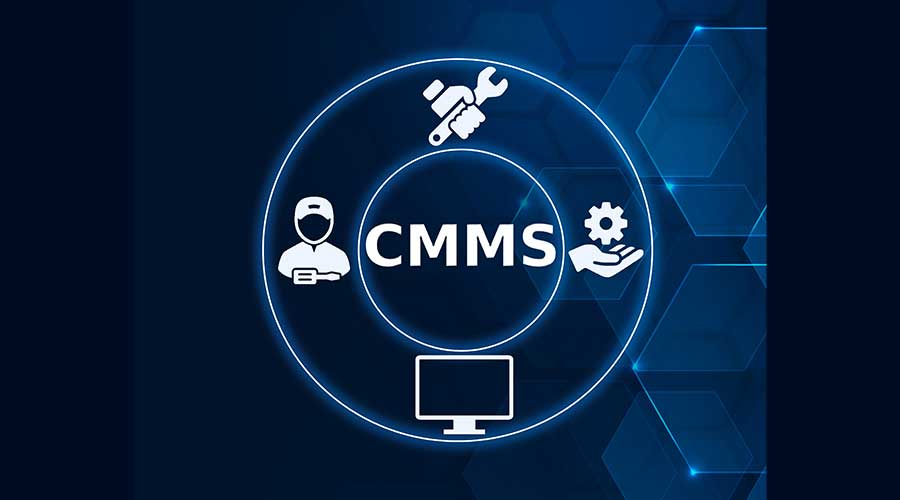CMMS Set-Up Solutions
Software developers offer insights into smooth implementations that deliver benefits to organizations
The search is over. The decision has been made, and the check has been signed. Now, the only step left before reaping the benefits of a new computerized maintenance management system (CMMS) installing it. But as most maintenance and engineering managers know, the challenges at that point are far from over.
Whether a department is buying its first CMMS or upgrading an existing application, implementation often gives managers the best and earliest indication of just how well the software will work and how soon the benefits will start to flow. The process is fraught with dangers, and success is far from guaranteed.
“Software and implementations have gotten better, but about 40 percent still fail,” says John Johnson of TMA Systems. “They just become shelfware.”
Managers are all too familiar with the stumbling blocks that can turn a CMMS into shelfware, from a lack of buy-in and proper funding to a failure to set goals. To help managers ensure the return on an organization’s CMMS investment, software developers recommend several proven strategies targeting common implementation problems.
Problems and Causes
The roadblocks managers and their departments encounter in implementing a CMMS can be numerous, and while they might be able to foresee some problems early on, avoiding them is another matter. In some cases, the problems are broad, in keeping with the scope of the process of upgrading a CMMS. For example, managers can become overwhelmed by the amount of work involved in implementing a CMMS.
“A lot of people don’t realize all that’s involved,” says Pat Maloney of Thinkage. Among the tough tasks involved are adapting the CMMS to department operations, entering or transferring data, and getting system administrators and users up to speed.
Adds Maloney, “They might not understand the amount of training needed and the amount of culture change involved.” Some managers also come to the process with unrealistic expectations about how quickly implementation can occur.
“Most people underestimate the time needed,” Johnson says, “Then they start to get frustrated.”
The problems that tend to crop up most often during implementation actually began to form much earlier in most cases — during specification and even before. For example, managers who find that a new CMMS isn’t delivering the intended benefits might have benefited from spending more time researching and identifying the goals of an upgrade.
“Sometimes, customers know what they want but not enough to get us home, to a comprehensive solution,” says Michael George of MaintenanceFirst.
A lack of support within the organization also can quickly undermine specification and implementation. That support starts with facility executives, but it also must include front-line technicians who will use the system most frequently. In too many cases, managers leave workers to form their own opinions on the goals of the upgrade by failing to involve them in the process.
“If you don’t communicate in a firm manner, people will go their own way,” says TMA’s Johnson.
Adds Pat Conroy of MicroMain, “Technicians tend to be nervous (about software), especially if they haven’t had a system before.” In some cases, technicians might believe the CMMS is little more than a tool to monitor their performance.
Seeking Solutions
CMMS developers have worked with departments facing all kinds of challenges.
“More often, it’s better to deal with someone who has had a CMMS before,” says Bill Wheeler of Cybermetrics. They tend to be more realistic, not idealistic.” Whatever the client’s situation, developers often step into the middle of a host of challenges, including customers who expect software to solve the problems. While that might happen, developers say customers can prevent, or at least minimize, the problems well before implementation begins. Consider the importance of setting goals. Before requests for information or proposals go out, discussions within an organization can help developers more fully understand customer needs and goals.
“If (clients) can articulate the problem, that’s half the battle.” says Mary Jo McElreay of Mainstream. “Clients can become scared because the task is so big, but it’s so much easier if they know what they want.” Taking a bigger-picture, longer-term view of the situation also can help all parties involved in the prepare for the task ahead.
“Managers need to develop process plans that map out activities from beginning to end,” Johnson says. When it comes time to talk with CMMS developers, managers also should be ready to ask tough questions.
For example, “Managers also should ask questions about the developer’s implementation team — who they are, their experience,” he says. Doing so can help managers feel more comfortable with the developer’s team.
Customers also benefit from talking with a developer’s sales people at length about the organizations’ needs and goals, Wheeler says. In some cases, developers have been known to turn away potential clients because the company’s software doesn’t match the customers needs.
Break it Down
Among the most important strategies developers stressed in minimizing the problems that commonly occur during implementation is breaking down the process into manageable pieces.
“Phases are essential,” says Eddie Forse of Mainstream. “You can’t do it all at once.“ He suggests managers consider focusing on the most important modules and components first — for example, setting up an application’s work-order and help-desk modules first, followed by the inventory-management function and, finally, mobile applications.
Managers often can’t do much about limitations created by tight deadlines, such as those set by a K-12 district’s summer break.
“But you can get (the CMMS) operational in stages,” Conroy says. Consider the process of creating the database of installed equipment. Each piece of equipment has a great deal of essential information, he says, “but all you really need to get started is the name and location of the equipment. You can enter the rest later.”
Finally, CMMS developers warn managers to think twice before they pursue CMMS customization. The system opens up a host of potential pitfalls for both developers and maintenance departments.
“It can be difficult to fit an organization’s workflow into an application, and vice versa,” Conroy says. Not the least of the difficulties created by customization is cost.
“If they want that, it’s very expensive,” Maloney says. “Anything you want, you can pretty much add a zero” to the price. And there’s more.
“If you customize it too much, it can be difficult to upgrade later,” Conroy says.
In addition to improving CMMS performance and payback, minimizing implementation problems has another benefits for managers: It cuts down on headaches.
Integration Issues
Clear communication can minimize problems commonly associated with CMMS implementation. And more often these days, communication means meeting with other departments within the organization to define the role of each in the process. Failing to do so inevitably complicates the process.
“It’s not uncommon for me to deal with the maintenance department and, as soon as I hang up, have to deal with the IT people,” says Michael George of MaintenanceFirst. “Sometimes, we’re dealing with two or three departments at the same time.”
Such conversations are taking place more often because organizations are seeking varying levels of integration among different software applications
“About half of our customers bring up the subject of integration,” says Pat Conroy of MicroMain. “It’s something they ask about, but about 90 percent of the time, they’re really asking about data import and export, not true integration.” A common use of CMMS data involves uploading labor and staff hours to a payroll department.
The major challenge in such efforts is that other programs, such as those for accounting and human resource applications, tend to be proprietary and, as a result, are highly structured and closed.
— Dan Hounsell
|
Related Topics:











